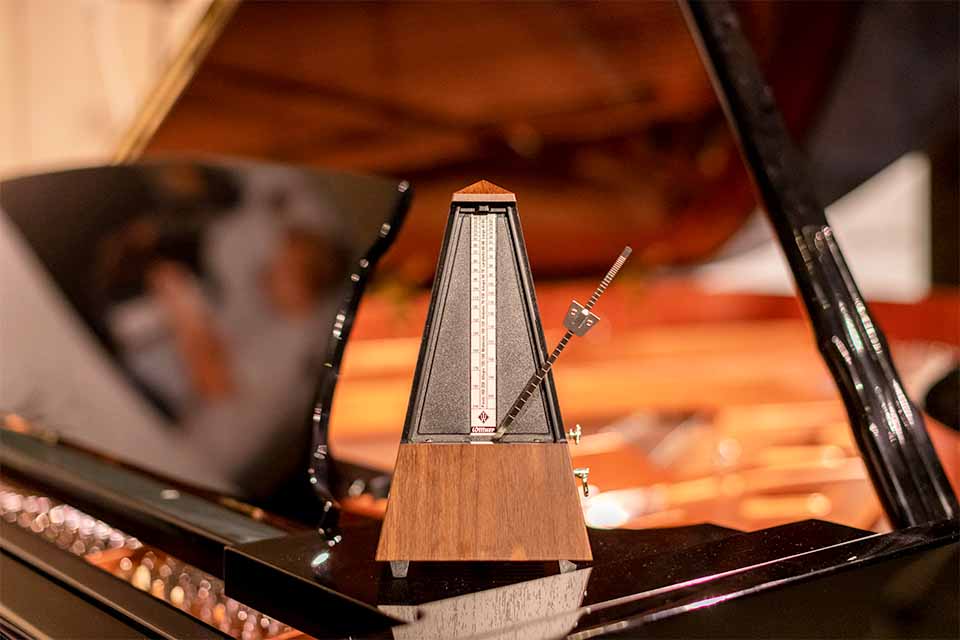A metronome is an oscillating device that ticks at regular intervals, with the possibility of setting the number of beats per minute. With its help, you can precisely specify the desired tempo of a piece of music, and you can check the evenness of your instrument playing. The word metronome comes from 1815 and it's a composition of the greek metron = measure, and nomos = regulation words. It was Johann Nepomuk Mälzel german engineer who launched its production.
There were experiments of making such structures from the 9th century onwards. The first, very similar device was developed by Dietrich Nikolaus Winkel in 1814, in Amsterdam and the name musical chronometer was given to it. The original is now owned by a Dutch museum. He did not protect his invention, so Mälzel, using the idea, developed it further and patented it in England under his own name a year later. Production started in 1816. Beethoven was the first composer to use a metronome for his works (from 1817).

The metronomes used nowadays are also based on the Mälzel-metronome The uniformly pulsating pendulum is operated by a spring, and the speed can be adjusted by sliding the counterweight on the pendulum arm. There is also a scale on the upper part of the arm, indicating the number of strokes per minute (typically between 40 and 208). In addition to the traditional, mechanical metronomes, there are also digital models on the market nowadays, and downloadable apps for computers and smartphones have also been developed. It is already a standard equipment of most digital pianos. An additional function of the digital versions and the apps is the option to specify the time signature, so the metronome gives a different sound on every 2nd - 3rd - 4th etc. beat.
The Metronome And Piano Education
How to practice using a metronome? Different artists and different teachers have different opinions about practicing with a metronome. I would add that it is advisable to give different advice to different students. The use of a metronome is especially useful if the student finds it difficult to play dotted or other, more complicated rhythm formulas accurately. On the other hand, it is harmful if the playing mode is mechanical and unmusical.
I recommend using it in two areas of practice:
- If we cannot play an etude or a technically difficult piece immediately in tempo, for some sections of the piece we can find the metronome number at which tempo the playing goes easily. We adjust our playing to steady ticks, and then increase the tempo step by step for the next turn. As soon as we feel that we have reached the desired tempo, it is advisable to continue practicing without a metronome. We can check ourselves afterwards to see if we kept the pace.
- If you want to set a specific tempo for the performance of a piece, give yourself a few measures with a metronome before playing. If the composer prescribes the desired tempo exactly, or gives different instructions for different parts of the piece, it is advisable to prepare each part with a metronome. Of course, the goal is to keep the sense of tempo, and sooner or later we will be able to recall it accurately even without a metronome.